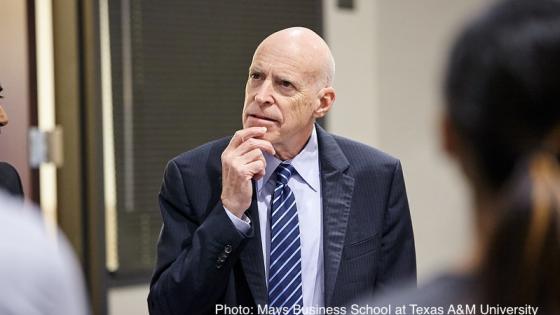We know that incentives work and that employers get what they pay for. In an influential paper, Lazear (2000) – for more background see Oyer and Shaw (2021) – showed how introduction of an individualised incentive increased firm performance by increasing individual worker performance and by attracting more productive workers to the firm. Yet, in some cases individualised performance pay cannot – or should not – be used. When production requires interdependent work, individual performance is rarely observable and, even if it is, instituting individualised performance incentives risks jeopardising overall performance. Instead, when one worker’s output is the input to co-workers down the line, group-based incentives offer an advantage relative to individual incentives. The problem is, however, that group-based incentives may lead to free-riding, the underperformance by some, or even most, workers due to watered-down incentives in the group. As such, will the introduction of group-based incentives increase performance of the group?
Most published research to date (limited to a few papers) shows that group performance increases when group-based incentives are introduced. For instance, Knez and Simester (2001) show how a small group-incentive contributed to Continental Airline’s jump from a bottom ranking to a top position in the national competition for on-time flight departures, and Friebel et al. (2017) find that shops in a bakery chain sell more products in response to a group (shop) incentive. Sometimes, however, life is more complicated. Hamilton et al. (2003) study a garment factory and find considerable variation in performance responses to a shift to group-based production and pay: some teams had average performance exceeding the performance of the most productive team member before the introduction of the incentive and other teams had performance below that of the least productive team member. While differences across teams start to unpack variation in performance responses, examining effects on group performance shield us from understanding any variation in the response in terms of effort of individual workers.
In our work (Frederiksen et al. 2022), we investigate the consequences of introducing a group-based incentive on individual worker performance in the context of a modern, complex, and interdependent production process. The company’s products are heavy, earth-moving machines such as dump trucks, backhoe loaders, excavators etc. as you have seen on any construction site. To build such machines, 2,000 to 2,500 parts are welded, machined, painted, and assembled, which implies that all workers in the factory are working on the same production line. Hence, the output of one worker is the input to another worker in the same department or the next. For this reason, the performance pay system introduced (the treatment) rewarded improvements in performance at the department-level and firm-level with equal weighting.
Two features of our setting open the door to investigating how individuals respond to group-based incentives. First, the company had been collecting individualised performance starting years prior to the incentive adoption. While they had tracked aggregated individualised data for years, individualised performance alone was not used for any managerial decision making. Second, the company had two (identical) plants operating on fixed pay for a long period of time and only shifted one plant to group-based performance pay. This leads to a convenient setup with a treatment and control site, allowing us to have strong confidence in the result that the introduction of the group-based incentive increased performance by 19%!
The result that performance can increase upon introduction of a group-based incentive corroborates previous findings. The new evidence we produce is on how such an increase in performance occurs. We find that 3/4 of the increase in firm performance is due to the so-called ‘incentive effect’ referring to workers becoming more productive when the group-based incentive is introduced, and 1/4 is due to the ‘selection effect’ (i.e. that more productive workers are present after the introduction of group-based performance pay). The selection effect follows because new hires under group-based performance pay are more productive than those leaving. Even with group-based incentives, high performers want to work in settings where performance is rewarded. Apparently free-riding is a backseat concern to these workers.
How does a worker achieve this higher performance? Workers can be more efficient when working on a task, they can show up for work more often, and then they can contribute to uptime (being allocated to a productive work order). Our results show that 2/3 of the increase in performance is due to improved efficiency (workers solve a task faster) and 1/3 is due to hours resulting from workers showing up to work more often.
Was the performance change larger for some and smaller for others? Despite free-riding concerns stemming from group-based incentives, being part of a group may have influence. Workers paid based on the performance of the group will naturally not tolerate that team members shirk, which leads to peer pressure; and team members (even without peer pressure) may feel some kind of internal pressure (such as guilt or shame) if they do not deliver in a team context. Kandel and Lazear (1992) are explicit about these mechanisms and when such effects meet the concerns for free-riding, it is not clear which will dominate. We establish that such positive performance effects follow from (almost) all workers exerting more effort. Hence, concerns about free-riding, or that some workers (such as high performers) would slack off after the introduction of group-based performance pay, or that positive effects are driven by a subgroup of employees (as in Hansen (1997) where only low performers respond) become unimportant. This is probably the most consequential result of our research. Since the work by Alchian and Demsetz (1972) and Holmstrom (1982) – see also Bryan (2016) – economists have been concerned about free-riding. Our results, in line with the mechanisms discussed by Kandel and Lazear (1992), show that other factors such as peer pressure and internal motivation to perform well in a group setting can dominate free-riding, leading to higher performance for individuals across the board upon introduction of group-based incentives.
A final question we address is if workers already knew how to increase performance and were holding back when pay was fixed, or if they were motivated to find new ways of working faster or smarter when the group-based incentive was introduced? We find a bit of both: during the first 6 months performance increased by 13% and after 18 months performance was up by 17%. So, the initial performance response was strong, but workers continued to improve performance over time.
The fact that we had both a treatment and control site and that we could measure individual worker performance before and after the introduction of group-based performance pay gave us the opportunity to show how individuals responded to the introduction of a group-based incentive, and documenting that such a response was essentially company-wide. Naturally, we need more research to confirm this finding, but if it is generally true, the implication is that firms should not hesitate to introduce performance-based incentives at the team level for free-riding concerns. In the words of the CFO, who was instrumental in designing and implementing the new incentive system: “I see the largest advantage [of the group-based incentive system] as having a common goal”, and he continues by delineating a clear transition from an “us versus them” mentality for how workers and managers related to one another, to feelings of being “all in the same boat” with shared expectations and shared goals. Maybe such results can be achieved in your company too.
References
Alchian, A A and H Demsetz (1972), “Production, information costs, and economic organization”, American Economic Review 62(5): 777–795.
Bryan, K (2016), “Bengt Holmström and the black box of the firm”, VoxEU.org, 23 October.
Frederiksen, A, D B S Hansen and C F Manchester (2022), “Does group-based incentive pay lead to higher productivity? Evidence from a complex and interdependent industrial production process”, IZA Discussion Paper.
Friebel, G, M Heinz, M Krueger and N Zubanov (2017), “Team incentives and performance: Evidence from a retail chain”, American Economic Review 107(8): 2168–2203.
Hamilton, B H, J A Nickerson and H Owan (2003), “Team incentives and worker heterogeneity: An empirical analysis of the impact of teams on productivity and participation”, Journal of Political Economy 111(3): 465–497.
Hansen, D G (1997), “Worker performance and group incentives: A case study”, Industrial and Labor Relations Review 51: 37–49.
Kandel, E and E P Lazear (1992), “Peer pressure and partnerships”, Journal of Political Economy 100(4): 801–817.
Knez, M and D Simester (2001), “Firm-wide incentives and mutual monitoring at Continental Airlines”, Journal of Labor Economics 19(4): 743–772.
Lazear, E P (2000), “Performance pay and productivity”, American Economic Review 90(5): 1346–1361.
Oyer, P and K Shaw (2021), “Edward Lazear: Personnel, policy, and productivity”, VoxEU.org, 9 January.






